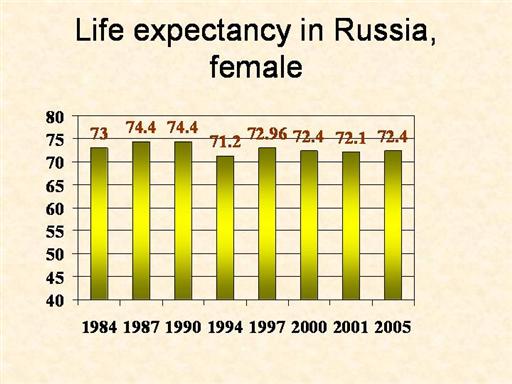| front |1 |2 |3 |4 |5 |6 |7 |8 |9 |10 |11 |12 |13 |14 |15 |16 |17 |18 |19 |20 |21 |22 |23 |24 |25 |26 |27 |28 |29 |30 |31 |32 |33 |34 |35 |36 |37 |38 |39 |40 |41 |42 |43 |44 |45 |46 |47 |48 |49 |50 |51 |52 |review |
 |
Female life expectancy, by contrast, has
tended to be more stable, dropping from 74.4 in 1990 to 71.2 in 1994, or
a loss of about two years. It peaked in 1997 at 72.96 years and
subsequently fluctuated at lower levels, reaching 72.4
years in 2000
9 (13) and 72.1 years in 2001.
In the case of both male and female life
expectancies, the bottom was reached in 1994, and both, particularly
women, recovered much of the lost ground in the latter half of the 1990s
(17), although these gains have reversed since 1998.
A striking issue concerns the size of
the gender gap, which has long been the largest in Europe. This
peaked at 13.6 years in 1994, when both female and male life
expectancies bottomed, due to the far greater loss of years of male life
expectancy. More recently (2000) it stands at 13.2 years. However
it should be noted that, while
Russian women live much longer than their male counterparts, they have
very high levels of poor health, so that healthy life
expectancy is surprisingly similar for both
men and women.
«Социально-экономическое
положение России. Январь-август 2006 г.» VIII. – Росстат, 2006.
|